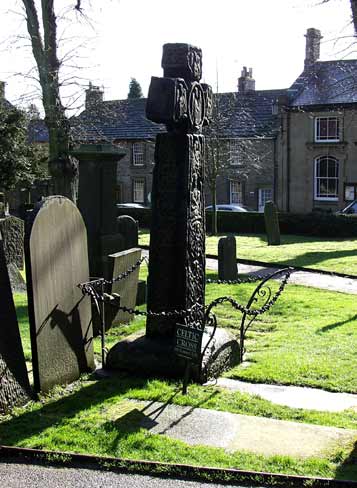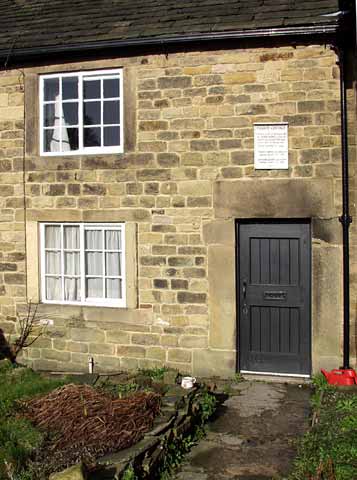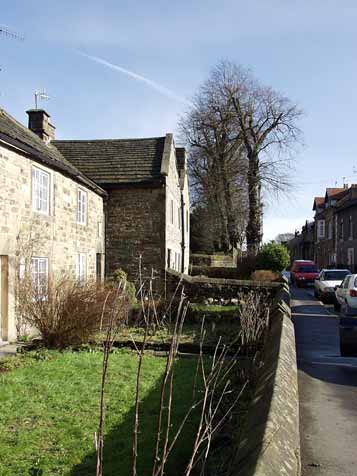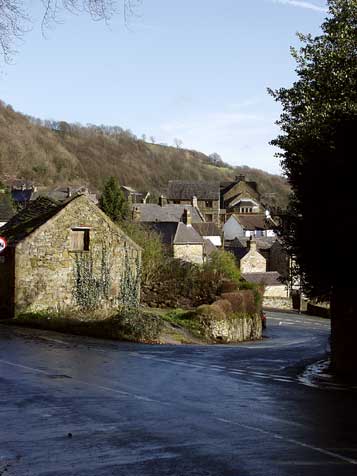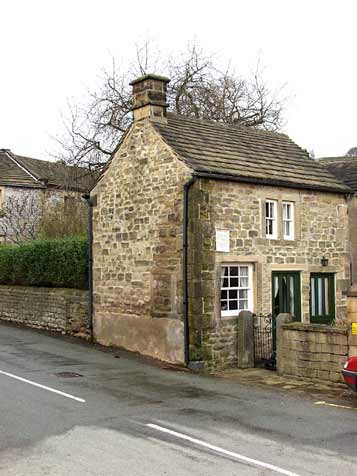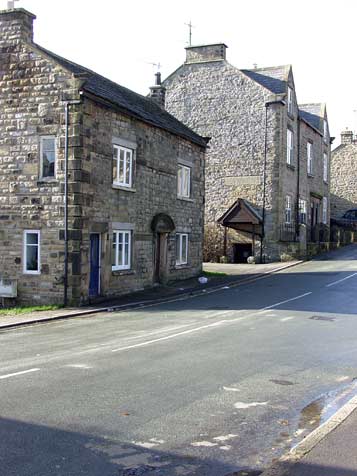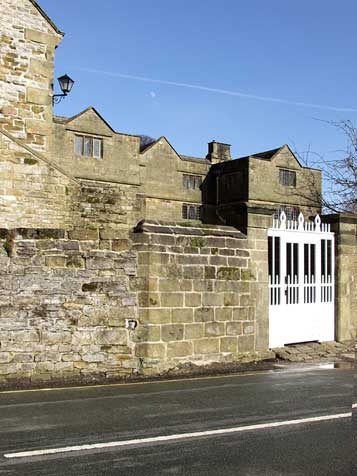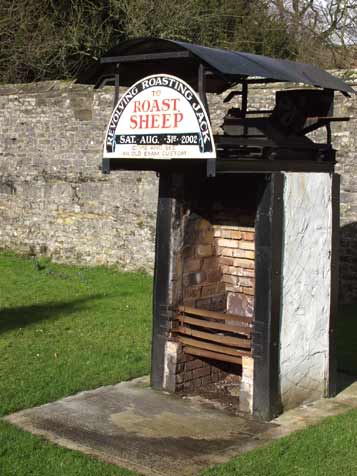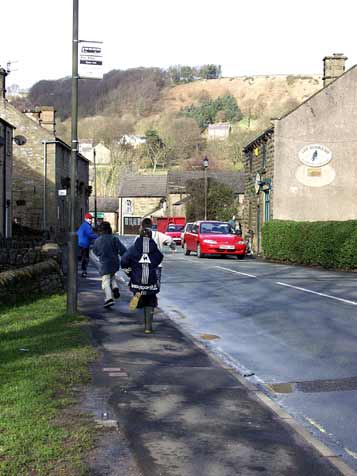|
|
 |
Plague Village
Fri. 22nd Feb., 2002
|
|
|
Eyam (pronounced "Eem") in Derbyshire, the location of a selfless sacrifice in the 17th
century, was the birthplace of a much missed lover, buried in the churchyard, who died four years ago this weekend.
The village is famous for the outbreak of Bubonic Plague
that ravaged over two thirds of the population in 1665 and 1666.
Although the people here would have heard about the awful epidemic in London at the time, they would have felt safe because of their
remoteness from the outbreak.
On September 3rd
1665 a delivery of cloth arrived for the itinerant tailor, George Viccars, who lodged with Mrs. Cooper and her two sons near the church in the village centre. |
|
 |
|
Viccars had build a lively trade in the village, bringing with him fashion of the day and affordable clothes and
alterations.
The new delivery was damp on arrival from London, and he opened it out in front of the living room fire to dry out. Unknown to him it harboured some infected fleas who welcomed the warm
surroundings to multiply.
The vectors of the Plague
were uncertain in those times, but close contact between people and intimate objects had been identified. The disease spreads from rats to the fleas that live on them and thence to humans. An infected human can then spread the disease through coughing and sneezing, or other body fluid exchange.
Here is the cottage in Church Street where it all started. |
|
|
|
|
 |
 |
|
Within a day George Viccars had become ill, and by the 7th he was dead. At first the villagers did not recognise the
red rose shaped boils and the darkening of his skin, but when both Mrs. Cooper's sons died people started to take notice and by the end of September six people had died.
Assisted by a previous priest,
Thomas Stanley, the local minister, William Mompesson, called a meeting of the villagers and suggested that they cut the village off from the surrounding neighbourhood until the disease had run its course.
He argued that although the consequence for the village would be bad and sometimes hard to bear, the resulting devastation to the population of the whole region would be even more terrible.
Although a
few moved out, most decided to follow the priest and fight in isolation. |
|
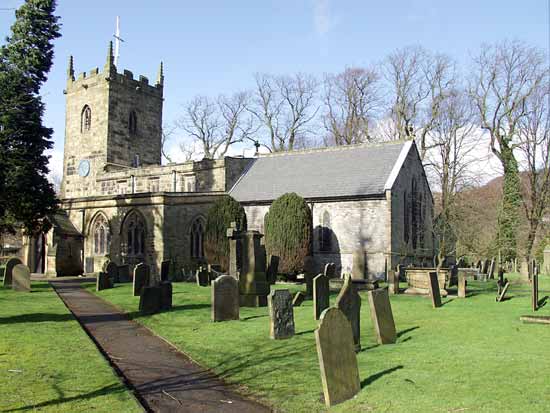 |
 |
 |
|
Mompesson abandoned the 14th century church and held services in the open, and boundary points were set up so that
supplies from beyond the village could be brought in. Small containers filled with vinegar were placed so that the money would not pass on the infection.
The village is in the Derwent valley and
surrounded by open countryside and all direct contact with other local villages was cut.
Emmott Sydall had been seeing Roland Torre from Stony Middleton some five miles away since before the plague.
They continued to meet in secret at the outskirts of the village in spite of the quarantine. When six of the Sydall family had died, she left a note saying that they must stop meeting in case he caught and
spread the plague. |
|
|
|
|
 |
 |
|
Normal funerals and church burials were out because of the risk of infection. The bodies were buried in fields near
the houses.
This is the house of the Merrill family. Humphrey died here towards the end of the outbreak on September 9th 1666, but Andrew, who lived in a hut on the hillside survived.
260 of
the 350 village population had died by the end. William Mompesson survived but his wife Catherine perished. In December 1666 when the plague had ended, Roland Torre was one of the first to re-enter the
village. His beloved Emmott had died days after leaving that lifesaving note. He lived to an old age, but never married. Nobody was ever the same again after the plague in Eyam. |
|
 |
|
The principal industry in Eyam was cotton and weaving until the introduction of the power loom when the craft was
turned to silk.
A local artisan, Ralph Wain, had the idea of forming a pattern on both sides of the material, and he successfully sold his method to a large silk manufacturer in Macclesfield.
This trade declined, and for a brief period there were three shoe factories in the village. The last one closed due to cheap plastic imports in 1979.
Lead had been mined here since Roman times, and
the last active working, situated next to the school, closed in 1965. The present economy is dependent on tourism, as neighbouring high volume employers such as Blue Circle Cement close their factories in
the face of foreign competition. |
|
|
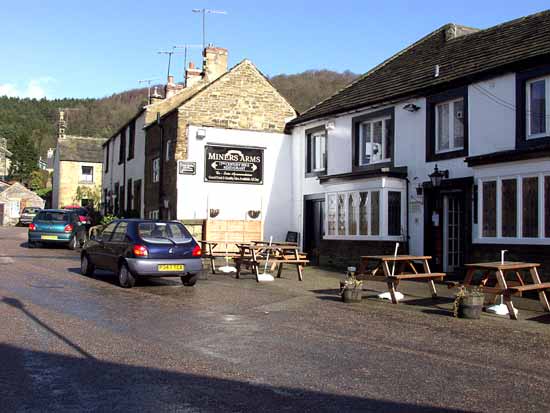 |
|
|
 |
 |
|
The Miners' Arms is now the only public house in the village. It was established in 1630 and the small
croft adjoining the pub is the site of a general plague burying pit.
The centre of the village is dominated by Eyam Hall, still owned by the family that built it in 1676, the Wrights. When it was put
up it was unfashionably passť, being in the Jacobean style. It is now partly a craft centre and is open to the public in summer.
Opposite this grand pile is the village stocks and the Market Hall.
On the other side of the church lies the little school. The whole community has been affected in one way or another by the teachers here. Many prominent people of learning and influence have passed
through these modest doors. |
|
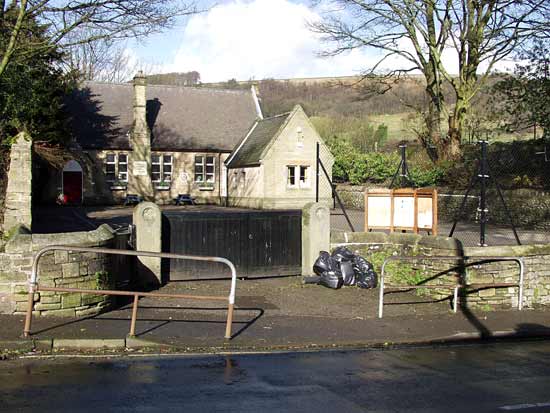 |
 |
|
The events of those fourteen months when the villagers sacrificed so much yet emerged victorious in
stopping the spread of the plague are celebrated every year.
Here on the village spit a sheep is roasted, and the nearby Cucklett Delf again hosts an outdoor religious service, reminding all of
Mompesson's efforts during those dark days.
A carnival atmosphere takes over, and an elaborate and unfathomable ritual of well dressing continues. The covers are decorated with clay and stones in many
complicated patterns and pictures. Villagers spend weeks preparing for this annual festival.
The Village Square, pictured below, echoes to the sound of gaiety and celebration. |
|
|
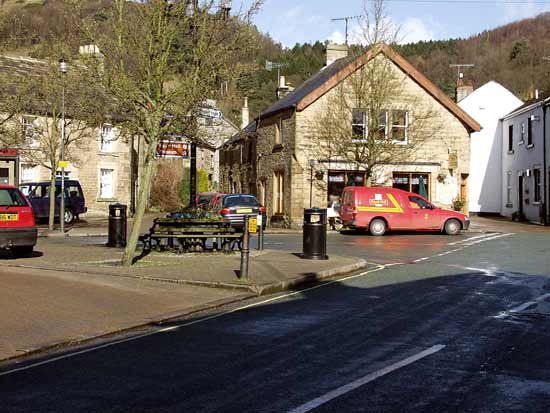 |
|
|
 |
 |
|
The village has survived much adversity, and yet remains optimistic. There are young people here and
families choose to stay, despite the harsher economic climate for rural communities, especially following the Foot and Mouth epidemic amongst livestock during 2001.
It is within the purview of the
Peak District National Park and despite constraints on building and its historical significance, the village remains a living changing place. The once resplendent Royal Oak public house where my dear friend
Glyn and I played chess became the rather quirky "Prancing Pony" before going bust and becoming a grand private residence.
Find out more about the Plague here. |
|
 |
 |
|
Site and contents (unless otherwise stated) © Tim. Pickford-Jones and Timmonet, Newcastle upon Tyne,
United Kingdom. |
|
 |
|
|
 |
|
If you should arrive here via a search, or be missing the navigation on the left hand side, click this button.
|
|





